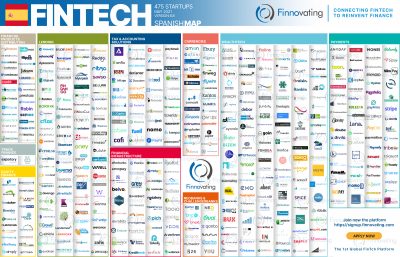In 2020, the fintech industry consolidated in Spain, with a sector growth of +15% in the year
Open banking has become a key asset in the growth of fintechs in Spain, which have gone from representing a total volume of 35 million euros in 2013 to 300 million euros in 2021. This growth, sustained at +1.3% year-on-year, has taken off in 2020 with figures above 15%. It is already possible to say that the fintech ecosystem has matured in Spain.
This stabilization has arisen from the confluence of several factors including the opening of the banking ecosystem to external developers, the banking penetration of previously closed services and the innovation carried out by new companies that have energized the sector as it opened up. And environments like BBVA API_Market have played their own role.
Fintech, in continuous growth
Between 2013 to 2021 in Spain, fintech growth has been sustained and equivalent to 1.3% year-on-year for eight years in a row. However, the growth curve is exponential: each year has seen more growth than the previous year, reaching figures around 15% and 20% in the last period measured.
While it is true that Spain (Europe, the Middle East and Africa in general) has arrived later on the market, it is also true that European payment directives such as the PSD2 have allowed these markets to quickly move up the ranking. In fact, these are the highest-growing regions, and if growth is maintained, they could soon catch up with North America.
This is the X-ray picture of fintechs in Spain
Although there are many ways to measure the volume of these companies, Finnovating’s 2021 fintech map is a good representation of the state of the fintech sector, especially when compared to previous editions when the number of companies was significantly lower. Mention should be made of wealthtechs, tech firms geared toward managing and growing people’s wealth; closely followed by lending companies; and payments.

Financial solutions in the form of infrastructure, financial services and products, digital currencies and neobanks close the ranking. According to this portal, investment in 2020 grew by about 20% YoY and there are now 463 fintechs.
Deusto Formación talks of +15% year-on-year growth, raising the number of fintechs to 500. Beyond the measurement method and the different classifications (as an example, the event “Leading Innovation in Financial Services” 2021 estimated the number of fintechs at 450, while the report “Challenges and threats of the FinTech sector in Spain. The vision of the current and professional potential”, of EADA Business School and ISDI, left them at 400), net growth is positive: the fintech market is maturing in Spain thanks in part to open banking, the digital ecosystem and offering added value to customers.
Which ten Spanish fintechs lead the Deusto ranking?
Deusto Formación has put together the TOP 10 of Spanish fintechs:
- Arboribus. It makes it easier for companies to raise financing through crowdlending loans: asking people instead of classic lenders for funding.
- Bestaker. Oriented to equity crowdfunding, it allows several people to finance projects.
- Captio. Startup that helps automate the management of business expenses.
- Exacta Tax. Fintech that automates billing to self-employed workers.
- Finanzarel. Offers advance business credits by prepaying invoices.
- Fintonic. Financial services aggregator for both companies and individuals.
- Kantox. System that automates currency management and international payments.
- Lanzanos. Crowdfunding startup. Its partners were pioneers in Spanish fintechs with Taunology.
- Novicap. Fintech for the collection of invoices and promissory notes.
- Zank. Fintech of loans between individuals.
To the growth of fintechs

Currently, the biggest barriers to fintech expansion lie along two major axes. First, the lack of specific talent in the industry, with a shortage of professionals that is expected to continue (training capacity below demand). Second, “very unexperienced” users who are basically captive to the traditional banking and financial services format.
This is recognized by the aforementioned study by EADA Business School and ISDI. In a survey of 300 professional financial operators, 88% of them confirm that users still struggle to enter the alternative banking industry, partly due to improved points of contact and the development of open applications.
The truth is that the two barriers are related. Without sufficient professionals, it is difficult to implement open banking systems open enough for end users to perceive them as integrated with the traditional banking ecosystem that they trust. And without new customers, open banking has more difficulty hiring talent.
The main advantage of this interaction is that the barrier of early adopters has already been overcome and that now open banking has enabled fintech growth above double figures. Maturity has reached this market, and some of the digital talent formerly owned by traditional banks are now dedicated to developing fintech solutions both in-house and as startups.
The role of open banking in promoting fintech
Although horizontal and often at the back end of the business, invisible to end customers, open banking is an essential tool for the fintech industry. A new way of working that makes use of technology to integrate banked systems. In the case of BBVA API_Market, this technology has its roots in the fertile ground of APIs.
APIs are an interesting open banking tool to integrate systems that allow the interaction of end users, developers, banked services and classic banks. An arrowhead of fintech technology that reduces the learning curve of users, who are often not even aware of the technology after the click.
With a clear environment and without visual interruptions, APIs facilitate the use of advanced fintech services because they do not require a high level of knowledge from users. In fact, one of their great advantages is usability. Usability that underpins the growth of the sector and facilitates the entry of new players, companies and customers.
Images | Alessia Cocconi, Finnovating’s fintech map, Gilles Lambert












